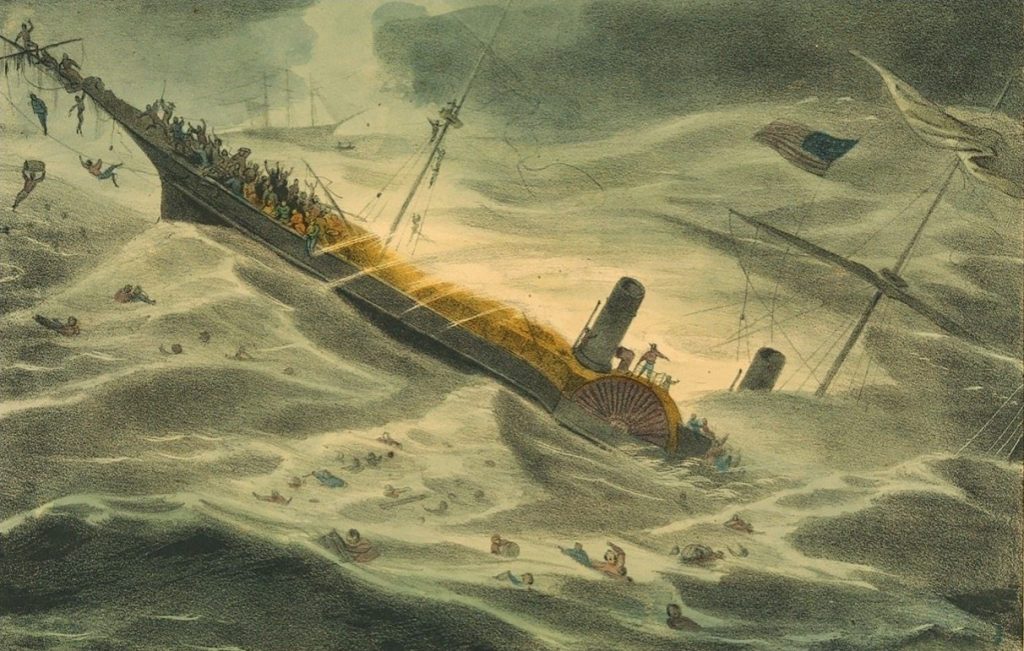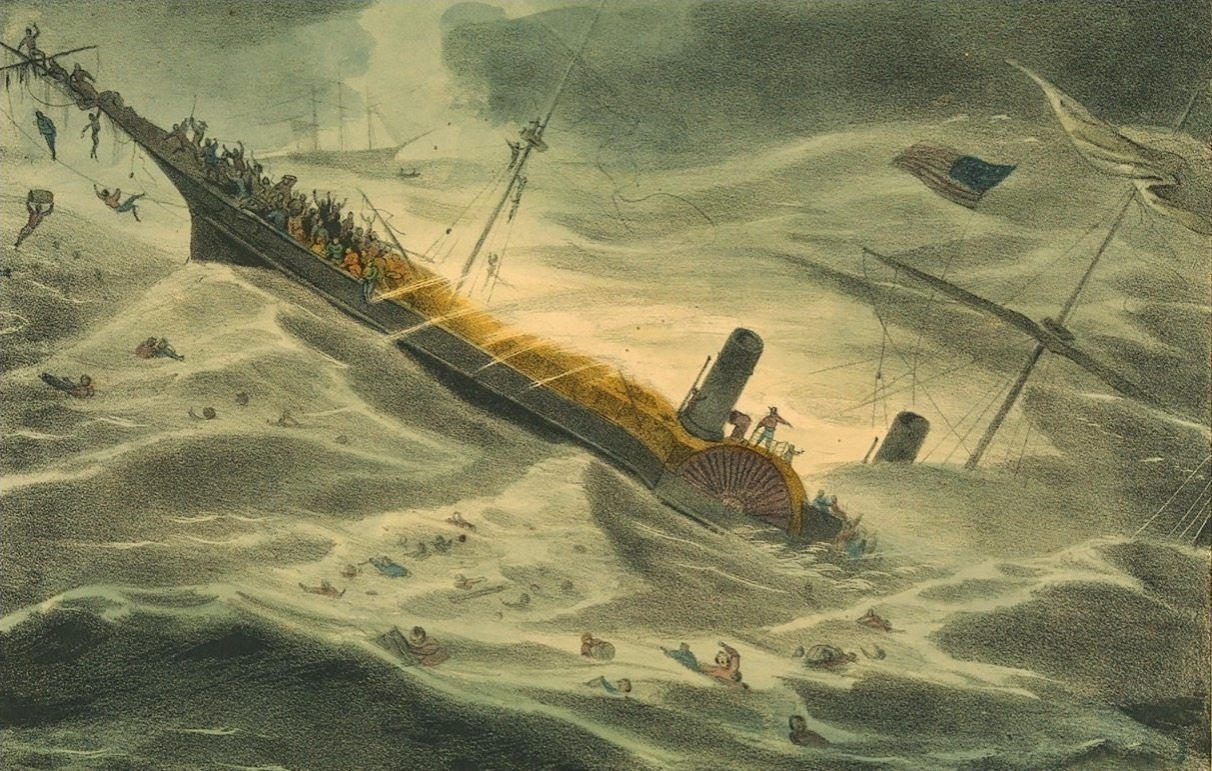
In 1857, a steam boat was going down in a storm off the coast of South Carolina. Loaded with more gold than had ever been placed onto a boat, the passengers chose to take photographs of family and loved ones before taking their chance with Davy Jones.
Thank to a recent expedition, dozens of these 150-year-old glass pane photographs have been recovered, putting a face on the SS Central America‘s unfortunates.
If the Titanic was the “Ship of Dreams,” Central America was the “Ship of Gold,” and of her 425 lost souls, most were miners returning from California gold fields wealthy beyond their wildest dreams.
Dr. Sean Kingsley, a British maritime archaeologist, was financed by private investors who have been trying to recover the treasure for more than 30 years, to dive down a mile and a half off the coast of South Carolina and retrieve what he could.
He partnered with Odyssey Marine Expeditions to make the dive, and the Kingsley co-wrote a paper on the discovery with an Odyssey scientist.
These tintype photos—daguerreotypes and ambrotypes—are kinds of wet collodion photography, and consist of panes of glass coated in chemicals. Ambrotypes produced a negative image that could be seen in front of black material, while daguerreotypes produced positive images visible when backlit.
“When you look at the actual faces of people, it takes you right there. You are looking at folks who lived it, and they’re just like us, although the clothing and fashions have changed,” Dr. Kingsley told The Guardian.
RELATED: Stunning 2,000-Year-old Glass Bowl is Still Flawless After Archaeologists Dig it Up in Netherlands
One individual he called the ‘Mona Lisa of the Depths’ is a young woman whose image is startlingly, almost eerily preserved. She stands with a quarter-smile, bare shoulders, swathed in jewels and lace.
The wreck and the tintypes are there to be seen in the magazine managed and published by Dr. Kingsley called Wreckwatch.
MORE: British Museum Unveils Ancient Artifacts Illuminating the World of Stonehenge in New Exhibit
“This is the largest cache of early photographs found at sea, and unpublished until now. It’s a once-in-a-lifetime experience to actually see faces from the deep,” he said.
The SS Central America sank off South Carolina in 1857 with the loss of 425 lives. Dr Kingsley is focusing attention on a collection of glass plate photos that preserved the faces of miners,merchants &their families,staring up at the living from the seabed https://t.co/gyf7Z7Kipa pic.twitter.com/MlhPKTcR2m
— Ticia Verveer (@ticiaverveer) February 27, 2022
153 people are believed to have survived; mostly women and children who filled up the lifeboats. Of the other 425, The Wreckwatch review includes the words of one survivor.
“A great many of the passengers were miners, having considerable sums of gold about them, the product of years of toil. But the love of gold was forgotten in the anxiety and terror of the moment and many a man unbuckled his gold-stuffed belt and flung his hard-earned treasure upon the deck, some hoping to lighten their weight, and thus more easily keep themselves afloat, while others threw it away in despair, thinking there was no use for it in the watery grave they were going to.”
SHARE This Story From South Carolina in Those Social Feeds…





















My great-great-grandfather and his gold went down with the SS Central America. The book Ship of Gold is an excellent book and hard to put down. The San Francisco Maritime Museum has a copy of the newspaper with the list of passengers with my great-great-grandfather’s name listed, Patrick Shields Smith
Elizabeth